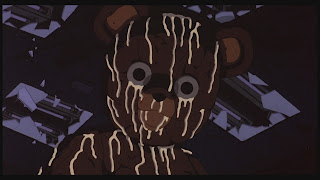I may have gone a little overboard here. While sifting through the frames of Katsuhiro Otomo's Akira, I discovered more beauty in the film than I thought it had to offer (and I knew it offered quite a lot).
It seemed impossible not to freeze my screen at any given moment because any isolated moment could be considered artistic in itself. When we see stills in hand drawn animation, we are reminded that these images actually exist in some concrete form - a strangely antiquated concept in our computer dominated world (try imagining an original frame from Toy Story and we become deeply confused).
Akira consisted of around 160,000 animation cells, accounting for its hyper fluidity and mesmerizing sequences. Some 5,000 of these cells are owned by this guy, who featured them at "The Art of Akira" exhibit in Pittsburgh a little over two years ago. All of this has been adapted, of course, from Otomo's manga-epic of the same name, tallying in at 2,146 pages.
I myself have condensed the film into one hundred separate shots - which seems a rather fair statement given the numbers that have preceded. I imagine this number being an unusual amount to work with, and don't suspect any future updates to feature so many. Is this visual overload or an appreciated effort? Let me know if you'd like (I'd like to hear!), but enjoy the chaos in the end.
Note: there are, of course, numerous spoilers ahead, just as a heads up.
Establishing shots like these almost beg to be frozen. They bombard the eye with detail; like a Where's Waldo or Eye Spy book. As already stated, these shots are taken from drawn images which would otherwise be static. But when they're converted to film (and each image is repeated twenty-four times per second), these pictures start moving! That's really so interesting.
Like any good film, Akira cannot fully be appreciated unless seen in motion. The last three stills are an example of Akira's visceral fluidity, though an obviously stinted one, since time has been removed from the image.
Little references like these offer more than just eye candy. Star Bowl, as depicted, doesn't offer anything in the way of narrative (it's in the film for a little over five seconds), but it is used as the clown's hideout in the Akira manga. I'm glad that this scene doesn't wave any red flags towards it being a reference, and is still aesthetically pleasing if the reference isn't caught. If anything, I feel that such a scene only emphasize's Otomo's dedication to his craft and conveys his love for his fans.
There are many little scenes like this that halt the action, if only for a moment, so that the image forms a mental snapshot in the viewer. The action pose has become such a such a beloved trope, one that's been parodied and practiced in excess. Any cool hero has one; its become a necessity. The pose is, if anything, a time in which the hero stands out from the narrative, and when a spectator's mental image of them is solidified. It's also a great way to conceive movie posters and action figures, a great way for spectators to actually obtain the image.




































































































No comments:
Post a Comment